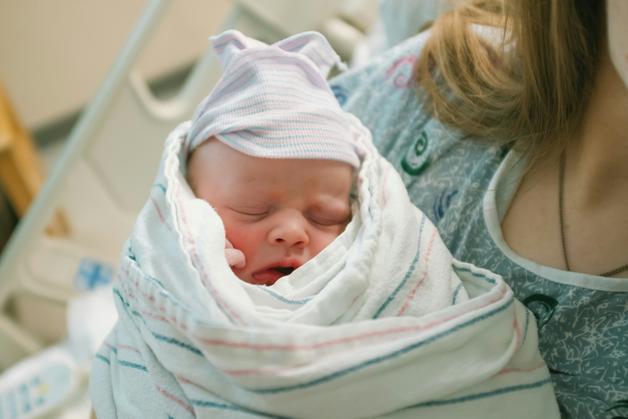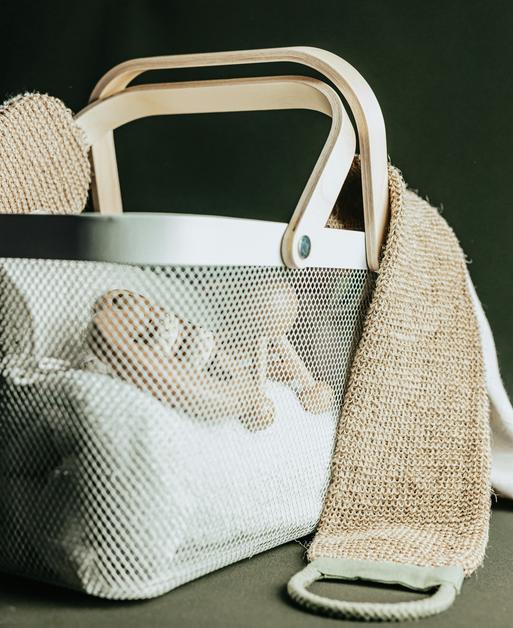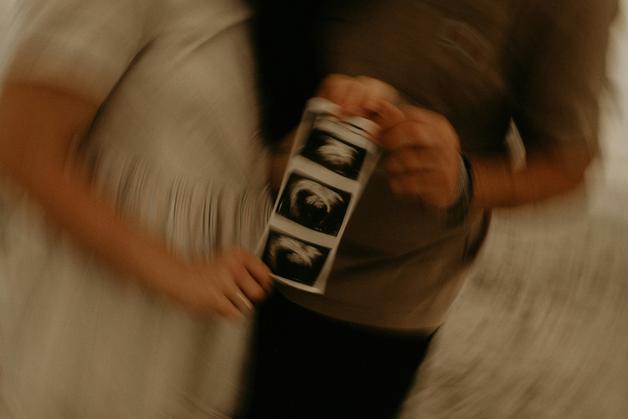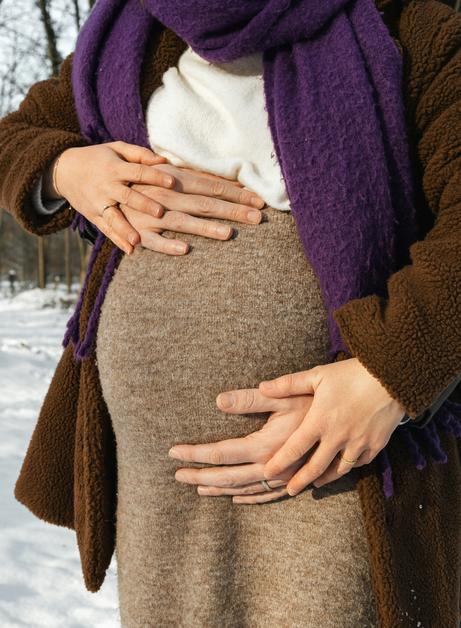Early parenthood asks a lot, sleep shifts, feeds blur together, questions stack up. A newborn essentials kit organizes the chaos, a compact set of tools that steadies your first 0 to 12 weeks. You want fewer decisions at 3 a.m., safer routines, faster handoffs to a partner or visiting grandparent, and some emotional breathing space. You also want science to anchor the plan. What belongs in this kit, when do you need it, how much is enough, and what can wait until you meet your baby. Let us map it clearly, with clinical signposts and everyday pragmatism. You will see the newborn essentials kit appear again and again, because it is the through line, from the hospital door to your living room.
What a newborn essentials kit is and why it matters
Think of a newborn essentials kit as a ready to reach station that covers feeding, diapering, a safe sleep setup, basic health tools, and a tiny wardrobe that actually fits. The goal is simple, reduce decision load, improve safety, smooth the hospital to home transition. Parents who prepare with structured checklists show lower stress and better adherence to safety practices, consistent with AAP safe sleep recommendations, discharge planning research, and family centered care. Small details make real differences, an inspected car seat, a verified sleep surface, a first feed plan on the fridge. Less scrambling, more presence.
Key outcomes for parents
- Immediate readiness, feeds, diaper changes, temperature checks, and car seat departures happen without last minute improvisation.
- Emotional steadiness, predictable supplies blunt anxiety spikes, especially overnight.
- Practical ease, faster responses, fewer emergency errands, a routine that helpers can follow.
You might ask, do I need everything on day one. No. A newborn essentials kit starts lean, then grows with your baby and routine.
Style, comfort and personalization
Clothes that feel good and function smoothly reduce handling during changes, which babies appreciate. Kimono or side snap bodies protect tender scalps because nothing goes over the head, while front opening sleepers mean fewer nighttime struggles. Caps help heat retention, scratch mittens protect facial skin, soft socks keep toes warm.
- Prefer breathable cotton, and consider organic cotton baby clothes to reduce exposure to irritating finishes.
- Pick right from birth sizes, for example 0 to 1 month, so the first outfits do not swallow your baby.
- Choose colors that calm or uplift you, neutral sets simplify mixing, playful prints can spark joy at 4 a.m. Both work.
The 48 hour essentials, hospital and home
Hospital bag quick list
Bring ID, insurance, delivery plan, phone and charger, comfortable labor wear, going home clothes, toiletries, snacks, water bottle, nursing bras if breastfeeding, maternity pads, nipple cream, and any medications. Pack one soft outfit for baby, a receiving blanket, and confirm your car seat is installed. A simple newborn clothing set keeps the baby portion tidy, and supports those first photos without scratchy fabrics.
Hospitals usually provide newborn diapers, wipes, a few blankets and hats, routine care items, and lactation support, though policies vary. Call your unit to clarify.
One sentence discharge readiness tip, have your car seat inspected and your home station stocked before labor begins, the newborn essentials kit should be waiting.
First 48 hours at home, bedside caddy
Baby
- 2 to 3 onesies or gown style sleepers, a soft cap, 1 receiving blanket, 6 to 8 newborn diapers, fragrance free or biodegradable wipes, and a compact changing pad.
Parents
- Nipple cream, nursing pads, water bottle, high energy snacks, a short phone charger, a visible contact list for pediatric and lactation support, a supportive pillow for night feeds.
Keep everything in one caddy next to the bassinet. Less wandering, more rest.
Diapering essentials
What to stock
- Disposable or cloth diapers, fragrance free or biodegradable wipes, zinc oxide barrier cream, a waterproof changing pad, a diaper caddy, a diaper pail or wet bags for travel.
How much
- Expect 8 to 12 changes per day in the newborn phase. Start with 60 to 90 newborn size if your baby fits that size, plus 60 to 120 size 1 for the next few weeks. For cloth, 18 to 24 inserts or prefolds with a reliable wet bag routine is a workable base.
Why it matters medically
- Frequent changes protect skin integrity and lower occlusive dermatitis risk. Use barrier cream at the first sign of redness, escalate to a clinician if rash persists or ulcerates. Watch for fever or lethargy with severe rash.
On the go
- Portable pad, spare outfit, sealable bag for soiled clothes, hand cleaning method, soap or sanitizer.
Feeding essentials
Breastfeeding
Core items
- Soft nursing bras, nipple cream, reusable pads, a water station, and accessible support such as a lactation consultant when you need hands on help. If expressing, choose a manual pump for occasional use, a double electric for frequent sessions, or a wearable pump for mobility.
Technical notes parents often wish they had earlier
- Flange fit is not a guess, measure the nipple diameter, then select a flange 1 to 3 mm larger, this improves comfort and transfer.
- Keep spare membranes and valves, flow can drop when consumables fatigue.
- Label expressed milk by date, and follow breast milk storage times. As a reference point, the CDC milk storage chart summarizes current windows, roughly up to 4 days in the refrigerator for healthy term newborns, longer in the freezer depending on freezer type.
Medical perspective
- Exclusive breastfeeding is recommended for about six months when feasible based on AAP and WHO positions, but any amount of human milk provides immunologic and nutritional benefits. Seek early support if latch pain, poor weight gain, or low output occurs.
Bottle and formula feeding
Bottles and nipples
- Start with 4 to 8 bottles, slow flow nipples, and a gentle paced feeding method so baby can breathe and self regulate. Vented designs may help some infants with gas, evidence is mixed, but parent perception of comfort matters.
Formula safety, non negotiables
- Use safe water, follow manufacturer instructions, and discard prepared formula within current guidance windows. Clean and sterilize as appropriate for age and health status, for example a steam sterilizer or boiling method.
Universal helpers
- Burp cloths, bibs, and muslins, plan laundry around these high turnover items.
Sleep and swaddling essentials
Safe sleep setup
- Choose a firm crib mattress with a fitted crib sheet. A bedside bassinet supports room sharing guidelines for at least the first months to lower sleep related risk.
Swaddle or sack
- Swaddling can soothe reflexive startles in the early weeks. Stop once rolling emerges. Shift to a sleep sack with arms free for continued warmth without loose blankets.
Thermal comfort
- Dress by room temperature and TOG ratings, lighter for warm rooms and higher TOG for cooler conditions. Check your baby by touch, chest warm, hands and feet can be cooler, that is normal.
Safety reminders with evidence roots
- Always place baby back to sleep. The absence of soft bedding, pillows, or toys lowers suffocation risk. Avoid bed sharing. Follow AAP safe sleep recommendations consistently for nights and naps.
Helpful extras
- White noise that is gentle, a dim night light, a room thermometer to keep about 68 to 72°F, 20 to 22°C.
Clothing and dressing essentials
Core wardrobe
- Short and long sleeve onesies, side snap bodies, front opening footed sleepers, soft caps, scratch mittens, socks. Gowns or open bottom sleepers can make night changes swift.
Materials and care
- Favor soft fibers, consider GOTS certified textiles when possible. Prewash new clothes using a gentle, fragrance free detergent, skip fabric softeners that can irritate sensitive skin. Many families also look for hypoallergenic baby products for wipes and creams.
How much to buy
- For laundry every 3 days, 8 to 10 sleep outfits and 10 to 12 burp cloths. For weekly laundry, increase to 12 to 14 sleep outfits and 18 to 24 burp cloths.
Bath and grooming essentials
Bath gear
- A small infant tub or sling, 2 to 3 hooded towels, 6 to 8 soft washcloths, a rinse cup.
Products and frequency
- Mild, fragrance free cleanser and shampoo, use sparingly. Many newborns do well with 2 to 3 baths per week, sponge baths until the cord stump separates.
Grooming tools
- Soft brush, gentle comb, baby nail clippers or an emery board, cradle cap brush if needed.
Medical note
- Avoid adult products and essential oils on newborn skin. Keep towels and sponges clean and dry between uses to reduce irritation and microbial growth.
Health and safety essentials
Thermometers and fever
- A digital thermometer is essential. For infants under 3 months, a rectal thermometer provides accurate core readings when needed. The fever threshold for infants is a 100.4°F fever, 38.0°C or higher, which warrants prompt medical guidance.
First aid and comfort
- Saline drops and a nasal aspirator for congestion, age appropriate analgesics only with clinician direction, a simple first aid kit, and nail care tools.
Monitors
- Many families value a video baby monitor for reassurance. Consumer wearables and medical style devices should not replace clinical monitoring and can add anxiety if used as alarms rather than tools.
Safety habits
- Medicines and small objects out of reach, periodic recall checks, and caregiver CPR training. A whole home view of baby proofing becomes valuable as mobility arrives.
Travel and on the go essentials
Car seats and strollers
- A correctly installed seat is non negotiable. Learn car seat installation basics, harness routing, snugness checks, chest clip at armpit level, no more than one inch of movement at the belt path, and consider NHTSA installation resources or technician inspection. For gear, many families start with an infant seat then move to a convertible car seat as growth accelerates. Travel system compatibility helps, but weight and maneuverability matter for daily use.
On the go kit
- Diaper bag with portable pad, pre measured formula or bottles, spare outfits, sunshade, compact first aid supplies.
Quantities and timelines, what to buy and when
Consumables
- 8 to 12 diaper changes per day at first. Stock about 60 to 90 newborn size if appropriate for your baby, plus 60 to 120 size 1. Adjust after the first pediatric visit and weigh in.
Feeding gear
- If bottle feeding, 4 to 8 bottles and 6 to 12 nipples to rotate. If pumping, 8 to 12 storage bags or bottles, and a spare pump kit to maintain hygiene and uptime.
Laundry cadence
- Every 3 days, plan 8 to 10 onesies or sleepers, 10 to 12 burp cloths, 2 to 3 sleep sacks, 2 to 3 fitted sheets. Weekly, increase proportions as listed earlier.
Buy before birth
- Car seat, safe sleep surface, a simple diapering setup, basic feeding supplies. These anchor the newborn essentials kit and remove last minute barriers during discharge.
Wait and see
- Extra clothing beyond 0 to 3 months, specialty bottles until baby preferences are clear, gadgets that promise soothing but may not fit your space. Keep receipts and track return windows.
Budget planning, must haves versus nice to have without overspend
Order of priority
- Safety first, car seat and safe sleep surface. Then high use consumables, diapers, wipes, feeding supplies. Then convenience items, sterilizers, warmers, or nursery decor.
Budget tiers
- Minimalist, standard approved seat, firm bassinet or basic crib, small diapering and feeding starter set.
- Midrange, infant seat with base, bedside bassinet with storage, quality pump or bottle set with cleaning tools.
- Premium, high end travel system, smart bassinet or advanced monitor, double electric pump with accessories.
Cost savers
- Subscription packs for consumables, safe secondhand on many items, but not car seats without a full history and not expired sleep surfaces.
Ready made kits versus a DIY newborn essentials kit
Pros of ready made kits
- Time saving assortments, simple gifting, often include a checklist.
Cons
- Sizing or seasonal mismatches, duplicate items you do not need, and they rarely include safety critical products like a certified car seat.
DIY strategy
- Build your newborn essentials kit in layers, safety items first, then feeding and diapering, then sleep accessories. Avoid starting with multiple bottle or pump systems, compatibility chaos steals time. For twins or preemies, create labeled packs by weight and needs so anyone can assist quickly.
Why it is a thoughtful gift
- A coordinated set of soft, right sized clothing and essentials acknowledges both the emotional marathon and the practical sprint of early parenthood.
Product selection, safety and materials
Safety labels and standards
- Confirm car seat certification and check that sleep surfaces meet recognized standards. Review return policies and warranty length.
Materials
- Aim for low chemical exposure in textiles when possible, supplement with certifications like GOTS certified, and consider broader sustainability where budget allows.
Cleaning and durability
- Machine washable textiles, removable covers, and available replacement parts extend product life.
Age based evolution, 0 to 3, 3 to 6, 6 to 12 months
0 to 3 months
- Frequent feeds, contact heavy soothing, swaddles early then transition when rolling begins. Clothing sizes focus on newborn and 0 to 3. Your newborn essentials kit lives near the bassinet for speed.
3 to 6 months
- Longer stretches overnight emerge in many infants, swaddling phases out, sleep sacks with arms free take over. Sizes shift to 3 to 6. Your newborn essentials kit evolves into a day and night caddy.
6 to 12 months
- Solids begin for many around 6 months, bottles reduce as cup and spoon feeding start. Crib only sleep becomes the routine. The newborn essentials kit becomes a mobile care set that follows play spaces.
When to retire or replace
- Stop swaddling once rolling appears. Replace worn nipples, valves, and pacifiers. Inspect mattresses, replace with indentations or per manufacturer guidance.
Packing versions, hospital, home, and travel
Hospital bag
- Parent, ID, insurance, nursing bra, postpartum supplies, phone charger, snacks. Partner, change of clothes, snacks, contact list, parking plan. Baby, going home outfit, receiving blanket, and the car seat.
Home station
- Bedside diaper and feeding caddy, night lamp, supportive chair, burp cloth stack, stocked changing supplies.
Travel kit
- Compact changing pad, pre measured formula packets or prefilled bottles, compact first aid kit, organized diaper bag.
Organization
- Modular caddies, labeled bins by size and function, rotate stock and check expiry dates. The newborn essentials kit thrives when everything has a home.
Maintenance, hygiene, and replacement schedules
Cleaning and sanitizing
- Bottles and nipples, clean after every use, sterilize based on age and health needs. Pump parts, wash after each session, sterilize per manufacturer guidance, keep a spare set. Laundry, fragrance free detergent, skip softeners.
Replacement timelines
- Pacifiers and bottle nipples every 2 to 3 months or sooner if damaged. Replace bottles when clouded or cracked. Review medicine expiry dates and store temperature sensitive items within range.
Mattress checks
- Inspect annually, sooner if damage or indentations appear.
Caregiver support and postpartum essentials
Parent comfort
- Water within reach, easy snacks, a supportive chair, a nursing pillow if it eases positioning.
Mental health and workload
- Schedule rest windows, share a simple task list, and use shared calendars for visitors. Baby blues usually ease within 2 weeks, watch for persistent mood changes or loss of interest and seek care for possible postpartum depression. Clinicians want to hear from you early, not late.
Eco friendly, non toxic, and small space strategies
Sustainable choices
- Cloth or hybrid diapers with a reliable wash routine, biodegradable wipes, durable gear that will serve multiple children, and textiles with low chemical finishes. Where certifications fit your budget they offer reassurance.
Small spaces
- Dual purpose furniture, foldable bassinets, compact carriers, and a second caddy stored at a grandparent home.
Tech and smart add ons, optional
When tech helps
- Video or audio monitors can provide remote visibility, sterilizers speed bottle turnaround, wearable pumps support mobility during expression.
When tech is unnecessary
- If it raises anxiety or tempts you to ignore safe sleep basics, skip it. Consumer devices should never replace clinical assessment for growth, feeding, or respiratory concerns.
Security
- Keep connected device firmware updated and use strong passwords.
Special situations and adaptations
Twins and multiples
- Double consumables, label by baby, mirror stations in separate zones, use batch prep and small grab and go packs.
Preemies and low birth weight
- Smaller diapers and clothing, careful temperature control through fit and layering, specialized feeding tools when advised, close follow up with the pediatric team.
Seasonal adjustments
- Winter, warmer TOG sacks and layers, no bulky coats in the car seat due to harness fit. Summer, breathable fabrics, sun protection for stroller time, extra hydration for the breastfeeding parent.
Common mistakes and expert tips
Frequent missteps
- Buying too many newborn only sizes, starting with multiple bottle brands, or prioritizing gadgets over safety items. Ignoring return windows, stocking seasonal clothing that does not match birth climate.
Expert tips
- Invest attention first in safety items and a reliable thermometer. Build a small, functional newborn essentials kit and expand after the first pediatric visit. Use modular storage and labels so every helper can find and replace supplies quickly. Keep key phone numbers visible, and ask for lactation or home visit support early if feeds feel painful or inefficient.
Printable checklists and quick start timeline
Seven day action plan
- Install and check your car seat, schedule inspection if available.
- Set up a safe sleep space, bassinet or crib, firm mattress, fitted sheet only.
- Create a bedside feeding caddy with day and night supplies.
- Place pediatric and lactation contacts on the fridge.
- Test your pump or your bottle cleaning workflow.
- Prepare a small travel kit for the first outing.
- Walk through a night routine scenario before baby arrives, you will spot missing items.
The newborn essentials kit is more than a box of stuff, it is your first system. Build it once, refine it weekly, and let it carry some of the weight so you can focus on your baby and your recovery. If you want structured support and timely prompts, consider downloading the application Heloa for personalized guidance and free child health questionnaires.
Key takeaways
- A newborn essentials kit reduces decision fatigue and supports safer routines from hospital discharge to home.
- Safe sleep matters, follow evidence based measures like back to sleep, firm mattress, and an uncluttered sleep surface.
- Feeding plans benefit from early support, use measured flange sizing, paced bottle techniques, and current storage guidance.
- Stock smart, buy safety items before birth, hold off on extras until you know your baby preferences.
- Organize into caddies, label and rotate, and keep your kit where you need it most, bedside at night, living area by day.
- Reach out to professionals, pediatricians, lactation consultants, mental health clinicians. Download the application Heloa for personalized tips and free health questionnaires.
You might circle back tomorrow and tune your newborn essentials kit, add three burp cloths, remove the extra gadget, swap one swaddle for a sleep sack, and move the thermometer to the nightstand. That is the quiet power of a well built newborn essentials kit, it keeps pace with your baby and with you.
Questions Parents Ask
When should I introduce a pacifier? Should I include one in the newborn essentials kit?
Many parents worry about timing — that’s normal. If you plan to breastfeed, try to wait until breastfeeding is well established (often 3–4 weeks) so you and your baby have time to find a consistent latch and feeding rhythm. If feeding is going well, introducing a pacifier can be fine earlier. Pacifiers are also associated with a lower risk of sleep‑related events when used at naps and bedtime. For formula feeders or when soothe-at-the-breast is not needed, earlier use is common.
Choose a one‑piece silicone or latex option recommended for newborns, keep a spare or two, and replace them when they show wear. If you have concerns about latch, weight gain, or feeding pain, check with a lactation consultant or pediatrician before introducing a pacifier.
How can I check whether a baby product has been recalled or is safe to use?
It’s wise to be proactive — product recalls happen and manufacturers sometimes update safety advice. Quick, practical steps:
- Register new products with the manufacturer (so you receive direct alerts).
- Check official recall databases for your country (for example, in the U.S.: CPSC.gov for general products and NHTSA.gov for car seats; in Canada: Recalls and Safety Alerts on Canada.ca).
- Search the model and lot/serial number on the manufacturer site before first use.
- Look for applicable safety certifications and read recent consumer safety reviews from trusted organizations (e.g., Safe Kids, consumer protection agencies).
If you find a recall, stop using the item and follow the recall instructions — many times a repair, replacement or refund is arranged. If in doubt, ask the retailer or manufacturer for written confirmation.
What are safe and simple ways to sterilize bottles, nipples and pump parts?
Keeping feeding gear clean reduces infections and gives peace of mind. Practical options:
- First use: sterilize bottles and nipples before the baby’s first feed.
- Boiling: fully submerge parts in boiling water for 5 minutes; allow to air‑dry on a clean surface.
- Steam sterilizers: electric or microwave steam units are fast and effective for frequent use.
- Dishwasher: a hot cycle with a heated dry setting can sanitize dishwasher‑safe items.
- Chemical sterilizing solutions or tablets: useful for travel or when other methods aren’t available (follow product directions).
For pump parts, wash in warm soapy water after each use, rinse, and air‑dry; sterilize regularly or when caring for a preterm or immunocompromised infant. Always follow the pump manufacturer’s cleaning instructions and keep a spare set of valves/membranes so you can rotate parts while one set is sterilizing. If you’re unsure about the right method for your situation, check with your pediatric team — they can tailor advice for healthy term babies versus newborns with special needs.

Further reading :








